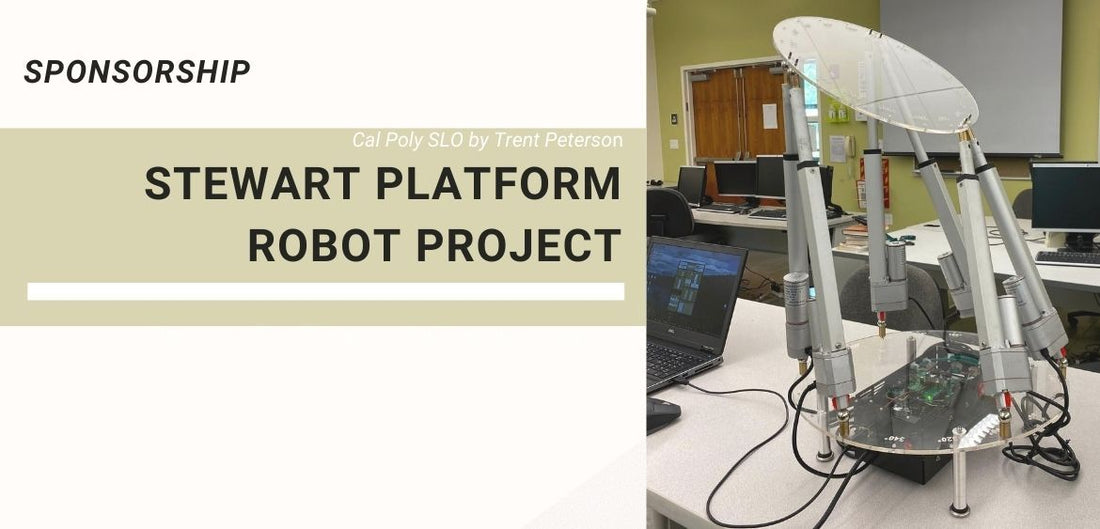Progressive Automations would like to present to you another impressive project by one of our innovative customers!
Trent Peterson, a graduate from California Polytechnic State University, has designed a Stewart Platform robot to be used in one of Cal Poly’s Robotics courses. The purpose of this design is to showcase what is being learned in the theory portion of the class, giving students the ability to apply their knowledge and verify inverse kinematics by studying the robot’s operation, range of motion, and limitations.

Mechanical Design
To begin designing this robot, a platform needed to be created that was easy to assemble and disassemble into various configurations using a hex key. A Stewart Platform is required to have linear actuators that include some form of positional feedback so that the end-user can configure and control the robot’s movements. After considering hydraulic and pneumatic linear actuators, it was decided that electric linear actuators would be easier to integrate into building this robot.
Key Features of the Electric Linear Actuators Used
Six of the PA-14P-8-35 Feedback Linear Actuators were used in this project. This unit has an 8-inch stroke with a maximum force rating of 35 lbs. With no load, this actuator can move at a speed of 2 inches per second, while at full load, it will move at 1.38 inches per second. This actuator has its own positional feedback in the form of a potentiometer, which is one of the top requirements for this robot’s design. Other mechanical constructions included in the making of this robot were magnetic spherical joints, platform material, shaft couplers, geometry configuration, and an electronics enclosure.
Electrical Design
Arduino offers a variety of microprocessors for control of any project, such as a robot. The Arduino Due was selected for use in this project due to its clock capabilities, memory size, and SRAM that can be used for the functionality and performance in operating the Stewart Platform. Although the Due is capable of controlling motors through its PWM outputs, it does not have the hardware to power them. Therefore, a HexaMoto Shield was also used in this assembly.

Software Design
Trent created a kinematic simulation of the Stewart Platform using Matlab – a matrix-based language allowing the most natural expression of computational mathematics.

1 6-6 Configuration Model for Inverse Kinematics Solution
A lot of research was put into setting up, initializing, calibrating, and homing the performance of the Stewart Platform robot. Platform configuration, as well as the positional calculation of the linear actuators, were also set via a graphical user interface (GUI) that was created using Matlab. This was to ensure that end-users can easily connect to the platform itself and operate it.

2 Stewart Platform Robot - Cal Poly SLO by Trent Peterson
After testing the Stewart Platform robot, it was concluded to be successful in its design, assembly and implementation. “It covers many facets of robots at an introductory level, including inverse kinematics, simulation, assembly and disassembly, and motion implementation.”
Congratulations to Trent for designing and implementing this Stewart Platform Robot for a robotics course laboratory, sponsored by Progressive Automations!




